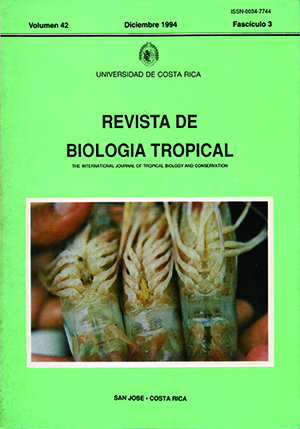Abstract
Foraging activities of Bolitoglossa subpalmata (plethodontidae: Bolitoglossini) on Puya dasylirioides (Bromeliaceae: Pitcairnoidea) were studied at a peat bog on Cerro de la Muerte, Costa Rica. Salamanders climb bromeliad infructescences more often than other substrates, and several times during a single night, if weather conditions are favorable. Strong winds with high precipitation inhibited their surface activity. The animals showed a tendency to climb Puya with an intermediate degree of senescence where they actively prey on resident arthropods. Comparisons between number of ingested prey at the bromeliad against other substrates, suggest a better availability or a large number of prey at the infructescences. There was a low frequency of two or more salamanders climbing the same Puya. Sheltered microhabitats at the Puya and specific postures of the salamanders while foraging on the infructescences, enable long periods at the Puya without losing much water due to wind.
This work is licensed under a Creative Commons Attribution 4.0 International License.
Copyright (c) 1994 Revista de Biología Tropical

